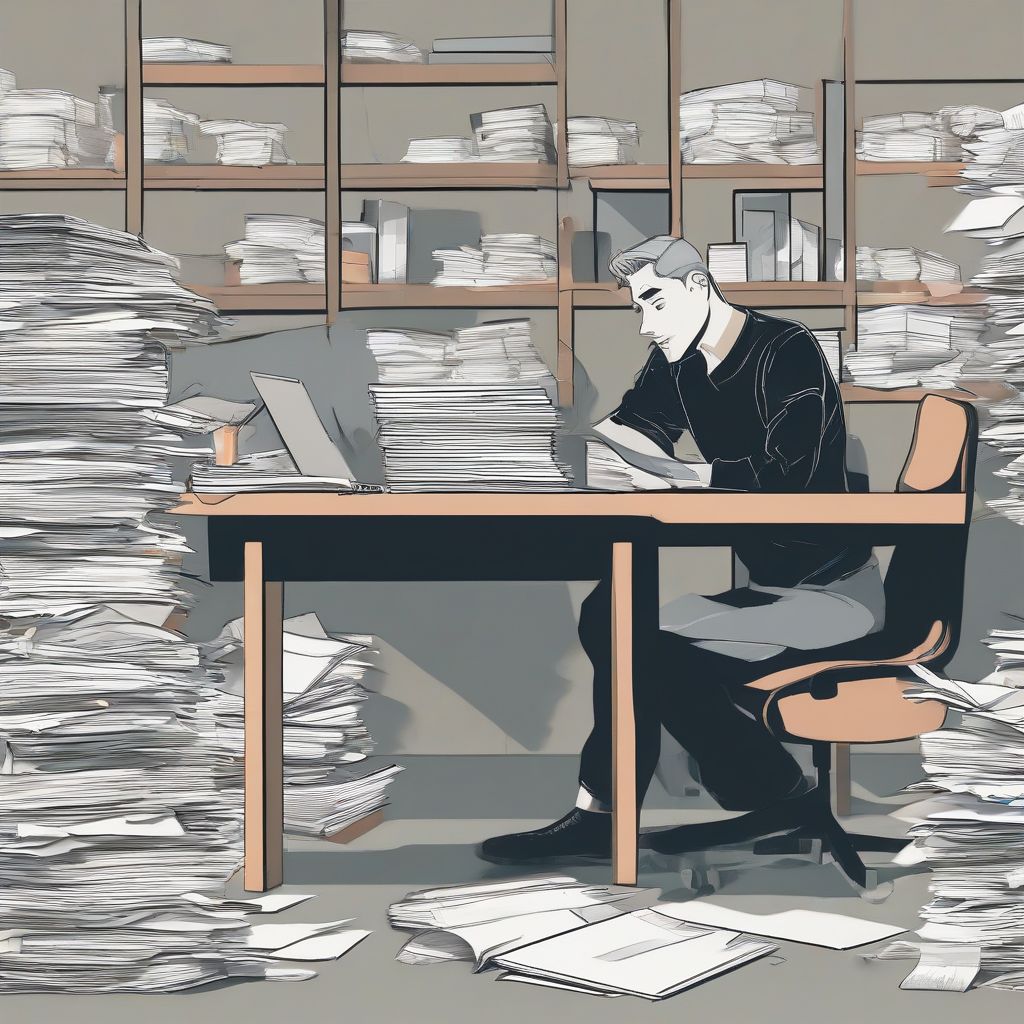Do you feel like you’re drowning in a sea of paper? Bills, receipts, mailers, notes – they seem to multiply overnight, taking over your counters, desks, and drawers. It’s a common struggle, but the good news is there’s a solution: going digital. This guide will walk you through simple, effective strategies to reduce paper clutter and embrace the digital world, leading to a more organized and stress-free life.
Understanding the Benefits of Going Digital
Before diving into the how-to, let’s talk about the “why.” Reducing paper clutter isn’t just about aesthetics; it has tangible benefits for your well-being and the environment. Think about it: less clutter means less stress, less time spent searching for misplaced documents, and more time for what truly matters. Plus, it’s a significant step towards a more sustainable lifestyle. “Digital organization is like giving your home a deep clean – it clears out the physical and mental cobwebs,” says a professional organizer I recently spoke with. Their clients report feeling lighter, more in control, and even more productive after decluttering their paper piles.
Practical Steps to Reduce Paper Clutter
Conquer Your Mail
One of the biggest culprits of paper clutter is mail. Implement these strategies to tackle it head-on:
- Opt for paperless billing: Most companies now offer paperless billing. Contact your service providers (banks, utilities, credit card companies) and switch to electronic statements.
- Unsubscribe from junk mail: Catalogs, flyers, and unsolicited mail contribute significantly to paper piles. Use services like Catalog Choice or DMAchoice to reduce unwanted mail.
- Digitize important mail: Invest in a good quality scanner and digitize important documents like birth certificates, tax returns, and insurance policies. Store these securely in the cloud or on an external hard drive.
Digitize Existing Documents
Don’t feel overwhelmed by the existing paper mountain. Here’s how to tackle it:
- Sort and categorize: Before you start scanning, sort your documents into categories (e.g., financial, medical, personal). This will make it easier to organize them digitally.
- Choose the right scanning method: For small volumes, a simple scanner app on your phone might suffice. For larger projects, a dedicated document scanner will be more efficient.
- Create a digital filing system: Organize your scanned documents into clearly labeled folders and subfolders. Mimic your physical filing system if that works best for you.
Embrace Digital Tools
Several digital tools can help you stay organized and paper-free:
- Note-taking apps: Evernote, OneNote, Google Keep – these apps allow you to take notes, create lists, and even save web articles digitally, eliminating the need for paper notebooks.
- Cloud storage: Services like Google Drive, Dropbox, and iCloud provide secure storage for your digital documents, accessible from anywhere.
- Project management tools: Trello, Asana, and Monday.com can help you manage tasks and projects digitally, reducing the need for paper-based to-do lists and schedules.
Maintaining a Digital Lifestyle
Once you’ve gone digital, the key is to maintain it. These tips will help:
- Regularly purge digital files: Just like physical clutter, digital clutter can accumulate. Set aside time each month to delete unnecessary files and organize your digital folders.
- Back up your data: Regularly back up your digital files to an external hard drive or cloud service to prevent data loss.
- Stay updated with technology: New tools and apps are constantly emerging. Staying informed will help you optimize your digital workflow.
 Reducing Paper Clutter and Going Digital
Reducing Paper Clutter and Going Digital
Remember, going digital is a journey, not a race. Start small, focus on one area at a time, and celebrate your progress. As “Getting Things Done” author David Allen says, “Your mind is for having ideas, not holding them.” Free your mind, and your space, from the burden of paper clutter and embrace the efficiency and freedom of a digital lifestyle.
How to Choose the Right Digital Tools
Choosing the right digital tools is crucial for your success. Consider your needs, budget, and tech savviness when selecting apps and software. Many offer free trials, so experiment and find what works best for you.
Securely Dispose of Paper Documents
Once you’ve digitized your documents, securely shred any paper copies containing sensitive information. For other documents, consider recycling them.
Conclusion
Reducing paper clutter and going digital is a powerful way to simplify your life, reduce stress, and contribute to a more sustainable future. By following these practical steps and embracing digital tools, you can create a more organized and efficient environment. Remember to start small, stay consistent, and enjoy the benefits of a clutter-free life.
Now, we’d love to hear from you! What are your biggest challenges with paper clutter? Share your tips and experiences in the comments below. And if you found this article helpful, please share it with others who could benefit from a more digital lifestyle. You might also find our articles on maintaining a clutter-free home and the benefits of decluttering for mental health helpful: How to Maintain a Clutter-Free Home Long-Term and The Benefits of a Decluttered Home for Mental Health. Let’s embark on this digital journey together!



